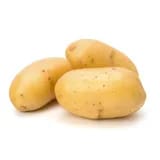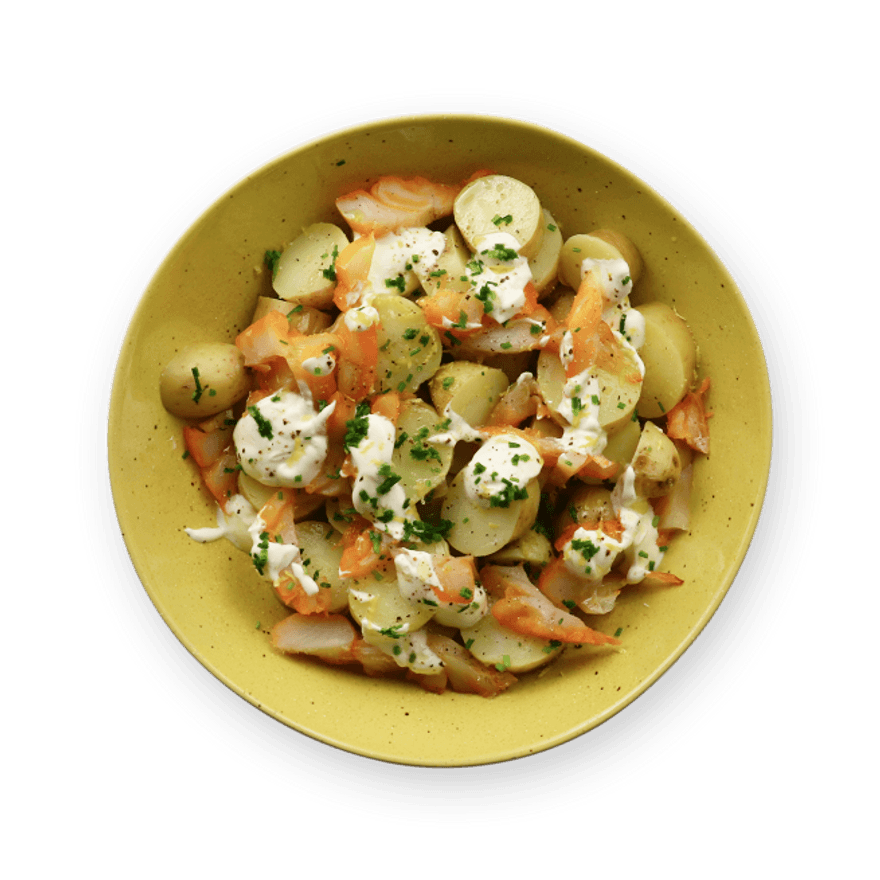Haddock and potato salad
86 reviewsA classic Nordic dish where the freshness of the sea meets the warmth of the land. Tasty but simple!

Ingredients
Make sure you have...
Utensils
Pot (small), Stovetop, Grater
recipe


Step 1
Cut the haddock into thin slices and put on a plate. Grate the lemon zest on top. Add the lemon juice and some pepper. Put in the fridge for the rest of the preparation time.

Step 2
Wash the potatoes and put them in a large pot of salted water. Simmer for 25 minutes over medium-high heat, starting the timer when you add the potatoes to the cold water.



Step 3
Wash and finely mince the chives. Mix the crème fraîche with the lemon zest and half of the chives.
Step 4
Once the potatoes are cooked put them in cold water to stop the cooking. Slice the potatoes.
Step 5
Put the potatoes in a bowl with the fish, cream and the rest of the chives and top with olive oil and pepper. Serve!
Personal notes
Add your own flavor!
Nutrition facts
Average estimated amount for one serving
| Energy | 399 cal. |
| Fat | 11 g |
| Carbohydrates | 42 g |
| Protein | 29 g |
| Fiber | 6 g |
Values are based on an average estimate for one serving. All nutrition information presented on Jow is intended for informational purposes only. If you have any concerns or questions about your health, please consult with a health-care professional.
On average, one serving of the recipe "Haddock and potato salad" contains 399 Energy, 11 g of Fat, 42 g of Carbohydrates, 29 g of Protein, 6 g of Fiber.
Price per portion
| € | Nos recettes à -2 € par portion |
| €€ | Nos recettes entre 2 € et 4 € par portion |
| €€€ | Nos recettes à +4 € par portion |
Please note, the price above is dependent on your grocer and the available products in the grocery store you chose.
Scores


B Nutri-score
The Nutri-score is an indicator intended for understanding nutritional information. Recipes or products are classified from A to E according to their food composition to promote (fiber, proteins, fruits, vegetables, legumes, etc.) and foods to limit (energy, saturated fatty acids, sugars, salt, etc.).
C Green-score
The Green-score is an indicator representing the environmental impact of food products. The recipes or products are classified from A+ to F. It takes into account several factors on the pollution of air, water, oceans, soil, as well as the impacts on the biosphere. These impacts are studied throughout the product life cycle.
Retrieving reviews...


